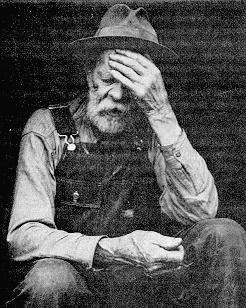
GISW
GLOBAL INSTITUTE OF SOCIAL WORK

Board of Directors and Volunteers at the GISW AGM 2016: Back row (LtoR): Terence Yow, Sim Gim Guan, Tan Ngoh Tiong, David Ong, Vicky Tan, Koh Juat Muay. Front Row: S. Vasoo, Ang Bee Lian, Arthur Tan, Elena Lui, Teo Mui Wan

CSD2015 Conference: Opening Plenary with Keynote Speaker Dr Noeleen Heyzer and Guest of Honour: DPM Tharman Shanmugaratnam

The International Federation of Social Workers is holding a competition to design the 2017 World Social Work Day Poster. The competition is open to anyone including people that use social work services, students, social workers and any one else.

Board of Directors and Volunteers at the GISW AGM 2016: Back row (LtoR): Terence Yow, Sim Gim Guan, Tan Ngoh Tiong, David Ong, Vicky Tan, Koh Juat Muay. Front Row: S. Vasoo, Ang Bee Lian, Arthur Tan, Elena Lui, Teo Mui Wan
Vision &
Mission
The vision of The Global Institute of Social Work (GISW) is to deliver quality social work training wherever in the world it is needed the most. Our goal is to provide readily available, cost-effective, and culturally appropriate training in various fields of social work.
1920-1929
Suffrage & Prohibition
The 1920s were marked by two laws that many social workers had worked diligently to pass: suffrage and prohibition. Both these reforms were thought to represent profound possibilities for changing society. Both suffrage and prohibition were a slice of a larger women's movement that counted social work as a significant enlistee. Prominent social work leaders such as Jane Addams, Lillian Wald, and Florence Kelly were almost as well known as suffragists as they were in the charity field. Many people, in and outside social work, believed that many heretofore perplexing social problems would, with the passage of these two laws, become more manageable.
In spite of these two major reforms, 1920s was socially and politically a conservative time. Cynicism about the Great War and anxiety engendered by the Red Scare that followed the Russian revolution dashed mainstream America's enthusiasm for improvement. It was as if the war, coupled with the attainment of a number of reforms, had exhausted the nation's appetite for reform. The 1920s were a period when many turned towards individual pursuits.
Public Social Work
A much stronger public welfare system buttressed the notion that further reforms were superfluous. Before the war, several states had moved the administration of their public services from volunteer boards to executive departments. By the end of the 1920s, most of the states and larger cities used an executive based system of administration for supervising public charities. This shift reflected the growing role state and local governments were playing in the field of relief.
While this re-organization was largely the child of the public administration movement, it also reflected an increasing dissatisfaction with the old spoils system of public management. Some social work leaders feared an emphasis on public management would result in an overemphasis on accounting principles to the detriment of children's welfare. However, there was much in public relief programs that needed reorganizing and it did lead to a greater degree of professionalism in the new welfare departments. Many public administrators used the expertise of social workers from both academe and private charities. Publicly employed social workers were often encouraged to follow the social work practice models which had been developed and were flourishing in the private charity organizations.
There were some reform successes. Most notable were the efforts of the Children's Bureau and the campaign for widow's pensions. However, those dedicated to the spirit of reform, for the most part, found the period disheartening and frustrating. Many of the settlement-based reformers moved out of the neighborhoods and into public service. Some examples: Julia Lathrop went to the Children's Bureau; Grace Abbot joined the Immigrant Protection League before succeeding Ms. Lathrop at the Children's Bureau; Florence Kelly ran the Consumers' League and led the national campaign against child labor; Harry Hopkins, a prominent resident at Henry Street Settlement, moved into a leadership position with the T.B. Association and later joined New York's Governor Franklin Roosevelt's administration as a public welfare administrator; and Francis Perkins became labor commissioner under Governor Al Smith .
Adapted from socialworkhistorystation.org
Special thanks to the late Professor Dan Huff and Boise State University School of Social Work


Racial tensions in the 1920s grew and organizations such as the Klu Klux Klan became more popular among white Americans.

Too old to work- too young to die. The aged were often forced to rely on public relief.

Governor Al Smith